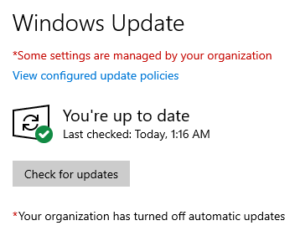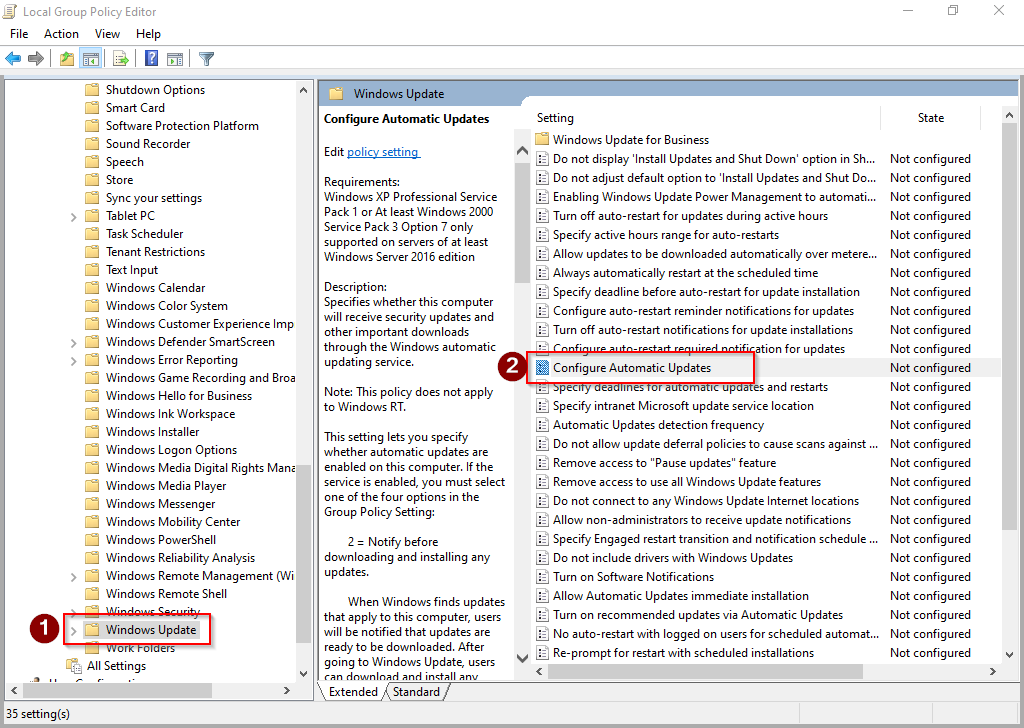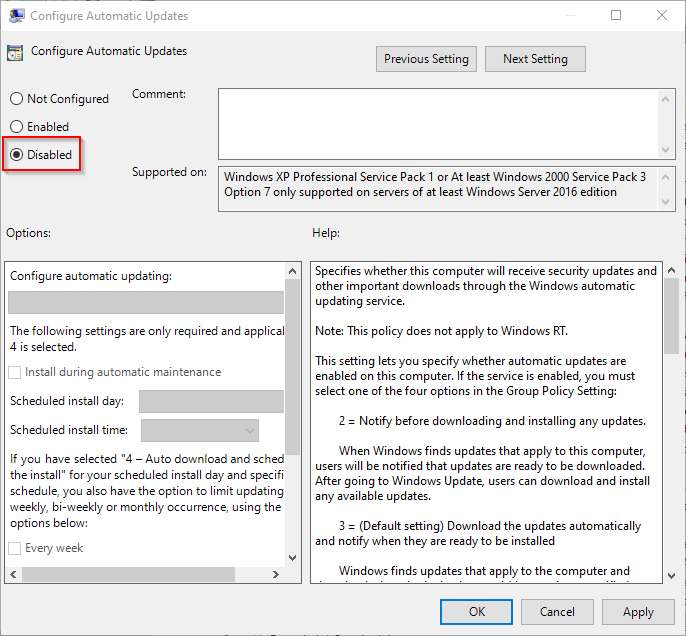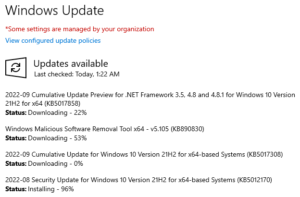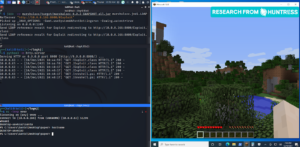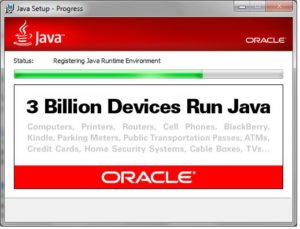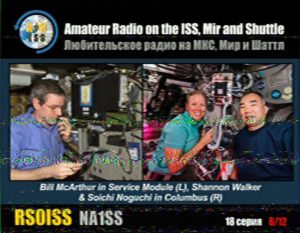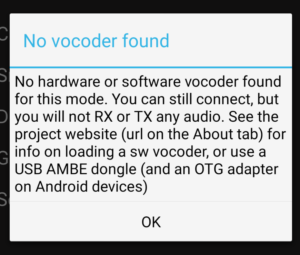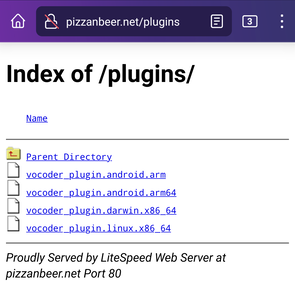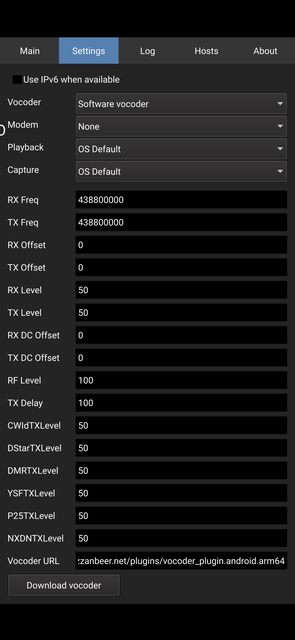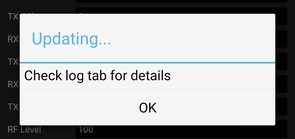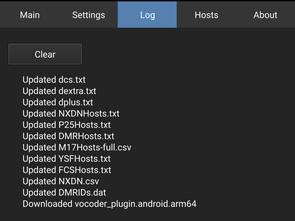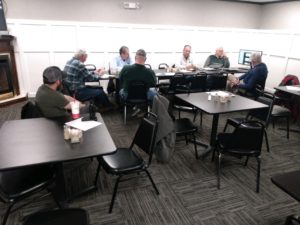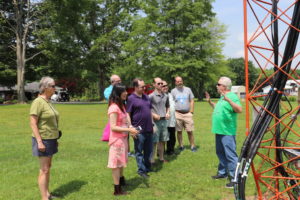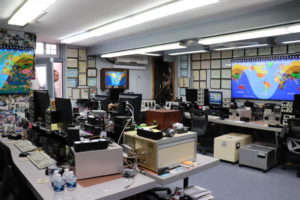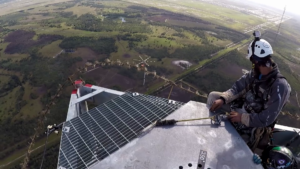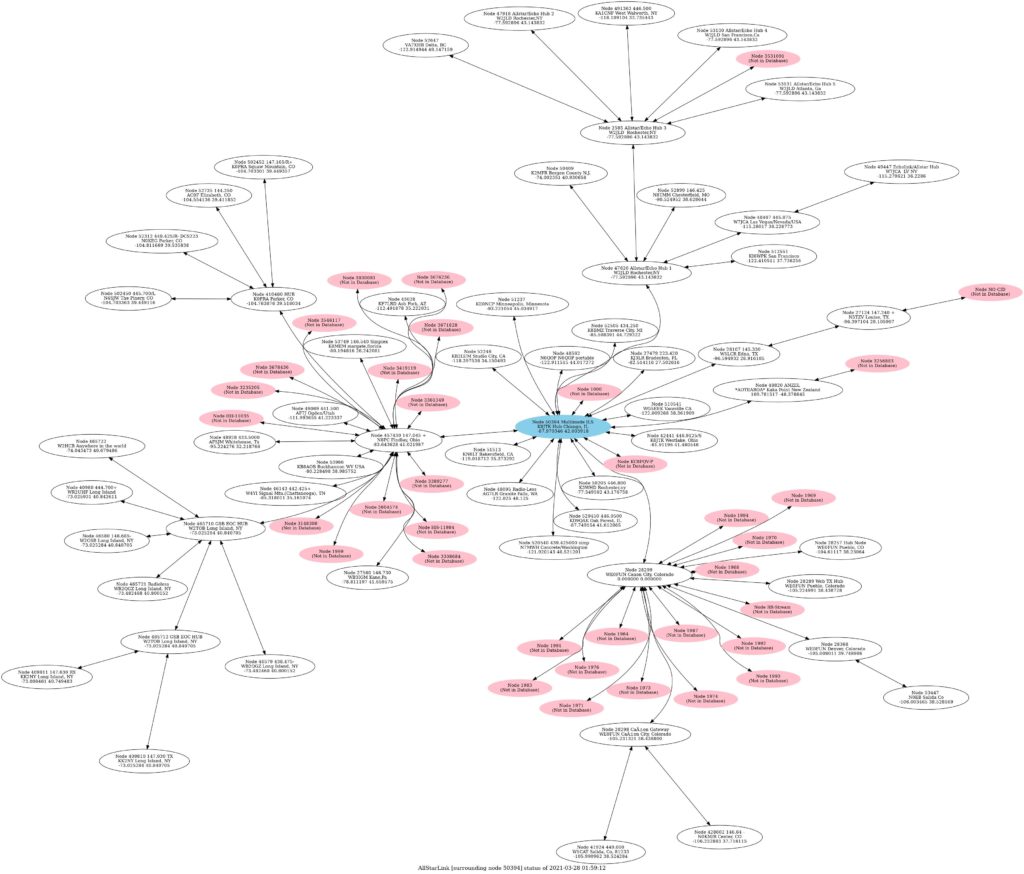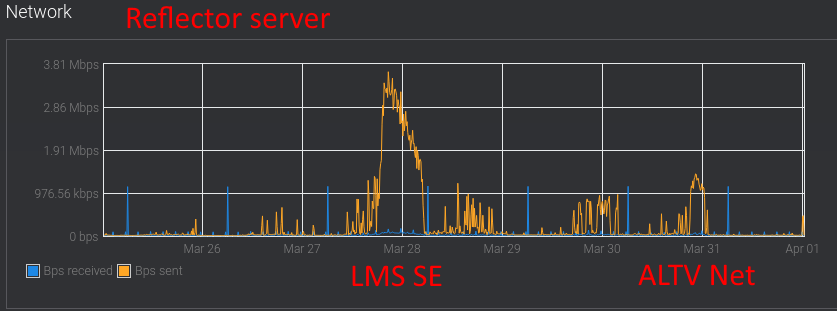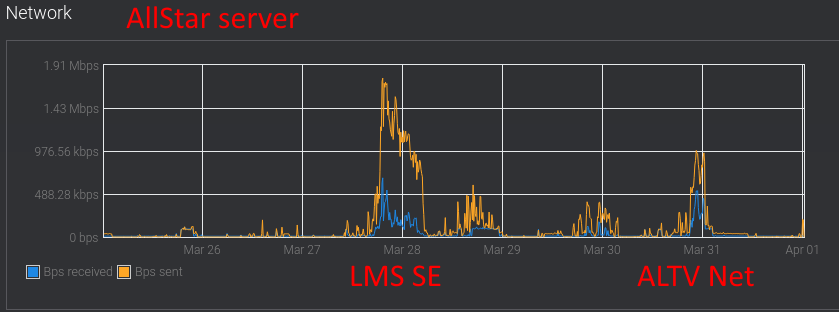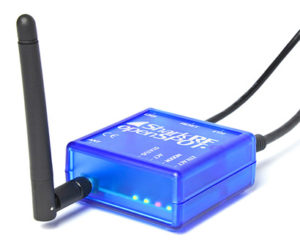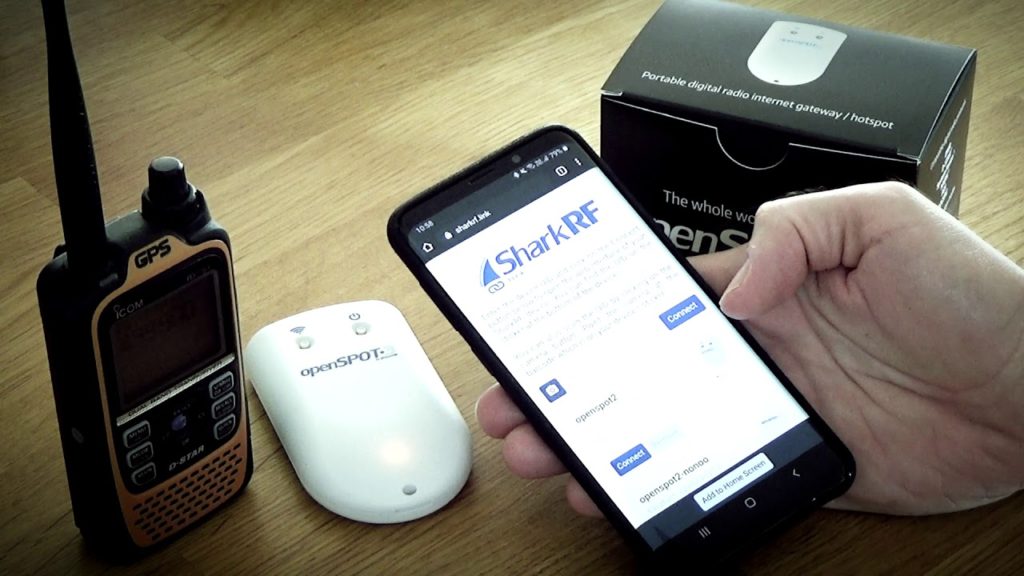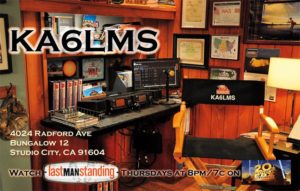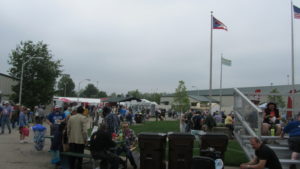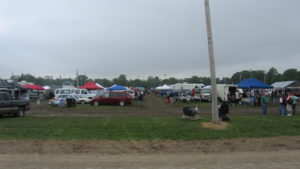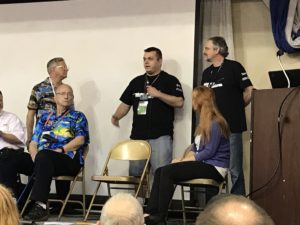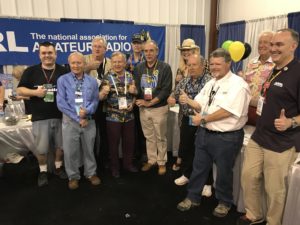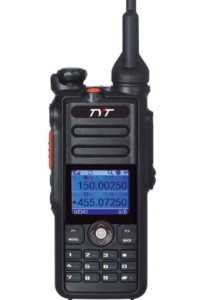One of the responsibilities of the Technical Coordinator in the Ohio Section is to submit something for the Section Journal. The Section Journal covers Amateur Radio related things happening in and around the ARRL Ohio Section. It is published by the Section Manager Tom – WB8LCD and articles are submitted by cabinet members.
Once my article is published in the Journal, I will also make it available on my site with a link to the published edition.
You can receive the Journal and other Ohio Section news by joining the mailing list Tom has setup. You do not need to be a member of the ARRL, Ohio Section, or even a ham to join the mailing list. Please sign up!
If you are an ARRL member and reside in the Ohio Section, update your mailing preferences to receive Ohio Section news in your inbox. Those residing outside the Ohio section will need to use the mailing list link above. Updating your ARRL profile will deliver news from the section where you reside (if the leadership chooses to use this method).
- Go to www.arrl.org and click the Login button.
- Login
- When logged in successfully, it will say “Hello <Name>” in place of the Login button where <Name> is your name. Click your Name. This will take you to the “My Account” page.
- On the left hand side, under the “Communication” heading (second from the bottom), click Opt In/Out
- To the right of the “Opt In/Out” heading, click Edit
- Check the box next to “Division and Section News.” If it is already checked, you are already receiving the Ohio Section Journal.
- Click Save
- There should now be a green check mark next to “Division and Section News.” You’re all set!
Now without further ado…
Read the full edition at:
THE TECHNICAL COORDINATOR
Jeff Kopcak – TC
k8jtk@arrl.net
As Technical Coordinator for the Ohio Section, I oversee the section’s Technical Specialists. We are here to promote technical advances and the experimentation side of the hobby by encouraging amateurs in the section to share their technical achievements in QST, at club meetings, in club newsletters, and at hamfests and conventions. We’re available to assist program committees in finding or providing suitable programs for local club meetings, ARRL hamfests, and conventions within the section. When called upon, serve as advisors for RFI issues and work with ARRL officials and other appointees for technical advice.
Technical Specialists are a cadre of qualified and competent individuals here for the “advancement of the radio art,” a profound obligation incurred under the rules of the FCC. TS’s support myself and the section in two main areas of responsibility: Radio Frequency Interference (RFI) and technical information. They can specialize in one or more areas or be generalists with knowledge in many areas. Responsibilities range from serving as consultants or advisors to local hams or speaking at local club meetings on popular topics. In the Ohio Section, there are 14 qualified specialists.
RFI/EMI (electromagnetic interference) includes harmful interference that seriously degrades, obstructs, or repeatedly interrupts a radio communication service such as ham radio or public service agencies. RFI sources range from bad power insulators, industrial control systems, nearby transmitters or poorly made transmitters, personal devices like computers, monitors, printers, game consoles – to grow lights, failing or poorly made transformers, and those devices hams brag about getting for cheap from China. Our Technical Specialists would offer advice to help track down interference or locate bozo stations when called upon. Technical information is wide-ranging, everything from antennas to Zumspots.
How can we help? The knowledge and abilities of YOUR Technical Specialists are really quite impressive:
- Amplifiers
- Antennas (fixed, portable, emergency operation)
- Antenna systems such as towers, guying, coax/feedlines, and baluns
- Boat anchors (tube technology)
- Computer systems – Windows, Linux, Raspberry Pi
- Digital voice and data modes – including D-STAR, DMR, Fusion, NXDN, P25, APRS, IGates, packet, TNCs, MT63, FT8/4, Olivia, PSK, etc.
- Direction finding
- Electronics and circuits, including teachers whom have taught electronics classes
- Former repair technicians
- Home brew
- Internet linking (Voice over IP, aka VoIP) – Echolink, AllStar/HamVoIP, DVSwitch, PBX/Asterisk
- Mobile installations – HF, VHF/UHF, antennas
- Narrow Band Emergency Messaging System (NBEMS) – Fldigi and Flmsg
- Networking – AMPRNet, routers, port forwarding, ISPs, firewalls, mesh, microwave
- Power supplies
- Propagation
- Repeaters, controllers, and high-profile systems
- RFI caused by power lines and consumer appliances
- RF safety
- SHARES stations (SHAred RESources – Department of Homeland Security HF radio program)
- Software Defined Radios (SDR)
- Tower safety
- Professional certifications such as Motorola Certified Technicians, Master Electrician, Certified Journeyman Electronics Technician, General Radiotelephone Operator License (GROL), ETA certifications, and Society of Broadcast Engineers (SBE) certifications and affiliations. Marine Radio Operator Permit holders.
This impressive list of qualifications are available resources to all in the Ohio Section. Looking for guidance in one of these areas? Need a program for your club meeting? How about a technical talk or forum at a hamfest? Assistance or direction on a project? My contact info is near my picture and on the arrl-ohio.org website. I’ll assist getting you in touch with an appropriate Technical Specialist.
With July around the corner, my favorite event, 13 Colonies Special Event will be on the air July 1st (9 am) – July 7th (midnight). There are 13 special event stations, one for each of the original 13 colonies. Three bonus stations include GB13COL (Great Britain), WM3PEN (Philadelphia), and TM13COL (French). A station does not need to work all 13 colonies to receive a certificate. The three bonus stations do not need to be contacted for a clean sweep. Good luck!
Earlier this month, I was recognized by the Virginia Emcomm group for participating in Winlink Wednesday for 100 weeks and received a nice certificate to commemorate the occasion. Ohio has 5 stations, as of this writing and by my count, in the WW Century Club. The original NCS, KW6GB, informed me about the net when I attended Winterfest in Annandale, VA while on a business trip. The baton has since been passed on to KN4LQN. It is an interesting concept and a way to keep activity on Winlink. As a result of doing peer-to-peer (P2P) Winlink messages for this net, I found I have a pretty good communication path into Virginia and the D.C. area. See my write-up on Winlink nets.
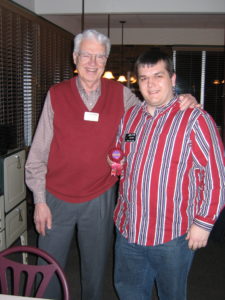
It is with great sadness that I report two longtime members of the Wood County Amateur Radio Club became silent keys. Stephen “Steve” McEwen – K8BBK became an SK on March 10, 2023. Steve was one of the leaders that revived the club in 2005 after the formation of a local ARES group. After one of the ARES meetings, Steve asked me if I had any ideas to make the club [WCARC] better. I was annoyed (still am) with outdated club websites. At that time, the club’s website was just that. An example, the repeater system PL had changed some years earlier but the website still listed the old one. Soon after that conversation, I’ve been maintaining the club’s website though I’ve returned back to the Cleveland area. Steve also got me to give my first ever club presentation on the topic of Echolink.
Steve was always engineering something. He worked as a Chief Engineer and later CEO for Henry Filters, a local industrial coolant filtration company, until he retired in 2001. Visiting his home, he practically had a full machine shop in his basement. His house had systems he engineered including a radiant floor heating system.
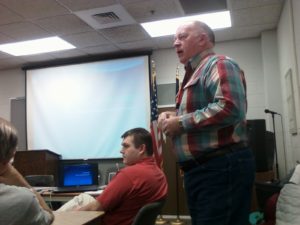
William “Bill” Wilkins – WD8JWJ became an SK a little over a month later on April 27, 2023. I can’t say exactly when I met Bill for the first time, it was probably at one of the breakfast meetings. Between cracking jokes and giving insightful advice, he was a person anyone could talk to. He had stories from co-owning a local video rental business for nearly 30 years, known for its selection of nearly 30,000 titles. I remember when he announced they were closing the business at one of those breakfast meetings. It would be the end of an era for a long-time local business.
When I returned back home after attending BGSU, I would regularly make it out for their breakfast meetings and, on occasion a presentation. Giving a presentation at one such meeting in 2012, Bill recognized me for service to the club with a nomination of Life Membership in the Wood County Amateur Radio Club. I’m eternally grateful to be honored with a Life Membership in an amazing club by such a respected member of the club.
Enjoy the hamfest in the sky, guys. Goodbye and 73, Steve and Bill.
Thanks for reading and 73… de Jeff – K8JTK

